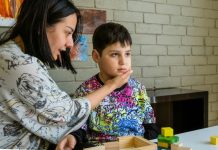
In a new study, researchers have recently mapped 102 new autism genes.
The new findings provide a new understanding of the biology behind autism, which could in the future be utilized to provide earlier and more precise diagnosis and better treatment options.
The research was conducted by a team from the Autism Sequencing Consortium and elsewhere.
Ever since the first autism diagnosis was made in 1938, researchers have been trying to clarify where the disorder originates. There have been many suggestions—along with many disagreements.
But one thing has been clear for a while: Genetics plays a major role with a heritability of up to 80%.
The team says broadly speaking, there are two types of genetic variants that play a role in autism.
There are uncommon genetic variants that few people have, although these may have a big effect, and then there are frequent variants which we all carry some of, and which each contribute in a very small way to the risk.
In the study, the researchers mapped the DNA building blocks in the genes of 35,584 individuals, of whom 11,986 had autism.
The researchers then determined how many times each gene is affected by variants with “protein disrupting consequences,” as the researcher puts it.
They identified 102 new so-called risk genes for autism.
The genetic findings provide entirely new insight into the biological processes that are involved in the development of autism.
Some of the genes identified alter early development broadly, while others appear to be more specific to autism.
Most of the genes help determine how neurons communicate with each other or they regulate the expression of other genes.
The team says the new findings may help doctors to make a diagnosis earlier. It may also help develop personalized medicine for those who may want this.
One author of the study is Associate Professor Jakob Grove from Aarhus University.
The study is published in the international journal Cell.
Copyright © 2019 Knowridge Science Report. All rights reserved.



